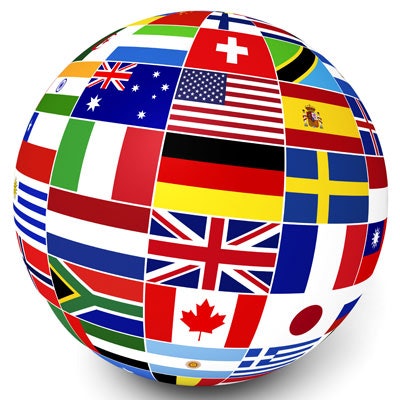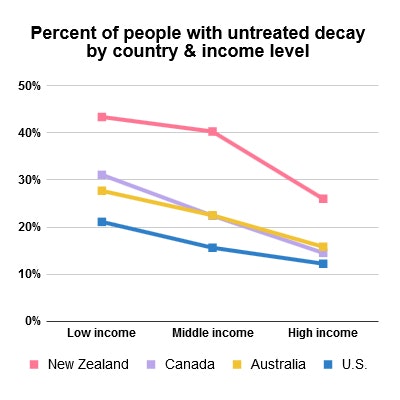
The dental care delivery system in the U.S. appears to do better than those of other, similar countries, according to the results of a new study. Researchers reviewed the oral health of thousands of people and found that the U.S. beat out other countries with fee-for-service dental care.
Their study included nearly 15,000 people 25 years and older from the U.S., Australia, Canada, and New Zealand. The U.S. came out on top for most oral health metrics, but the researchers still found significant differences between high- and low-income participants in all four countries. Their findings were published in BMC Oral Health on October 26.
"Whereas educational gradients in oral health and disease show some inconsistencies among countries, income shows consistently clear gradients across all countries," wrote the study authors, led by Gloria Mejia, DDS, MPH, PhD, from East Carolina University School of Dental Medicine. "In terms of dental disease, this reflects the ability to access oral healthcare, favoring populations with higher income."
Actual vs. perceived quality
Previous research has established that education and income are linked with oral health, including the occurrence of dental diseases and also how people perceive the quality of their own teeth and gums. Therefore, the researchers of the current study wanted to know how this link varied between high-income countries with similar dental healthcare systems.
To find out, they used national oral health data from Australia, Canada, New Zealand, and the U.S. The researchers included these four countries because they conducted national, comprehensive oral health examination surveys during a similar time frame (2003 to 2009), and each country mostly delivers dental care on a fee-for-service model.
The researchers looked at how the countries compared for the percent of residents with untreated tooth decay, number of decayed teeth, and perceived oral health quality of life. Their final analysis included nearly 15,000 people.

Oral health varied significantly based on income for all four countries, with lower-income participants experiencing worse oral health than higher-income participants. For those in the U.S. and Canada, oral health also varied based on education, and those with a college degree fared better than those with only a primary school education.
“The United States had the highest gaps in perceptions of oral health.”
Furthermore, the U.S. consistently had the least occurrence of dental diseases, yet U.S. participants also had the worst perceived quality of oral health. The researchers attributed this to the wording of the question in the U.S. survey and also the emphasis on the appearance of teeth in the U.S.
"While New Zealand had the highest absolute inequality in measure of disease, the United States had the highest gaps in perceptions of oral health," wrote the authors, later adding, "It is possible that the contemporary emphasis on dental aesthetics (such as tooth whitening) contributes to a general dissatisfaction in dental appearance and hence poorer self-rated oral health, whereas the same does not occur for general health."
More research needed
The study had a number of shortcomings, including that the researchers were unable to measure how different wordings of survey questions may have influenced the self-rated oral health quality results. Furthermore, the studies were not all conducted the same year, and there may be some variance between surveys conducted in 2003 and 2009.
Nevertheless, the study findings indicate that cultural differences may play a role in oral health and perceived oral health among similar, high-income countries. The researchers hope future studies will investigate the sociocultural and health delivery system differences that may influence oral health.
"Our findings demonstrate differences in oral health and dental disease experience across income and education groups, with socioeconomic gradients for both clinically determined and self-reported indicators," the authors concluded. "The variation in the magnitude of inequality across countries suggests the need for further understanding sociocultural and contextual determinants of oral health and dental disease."



















